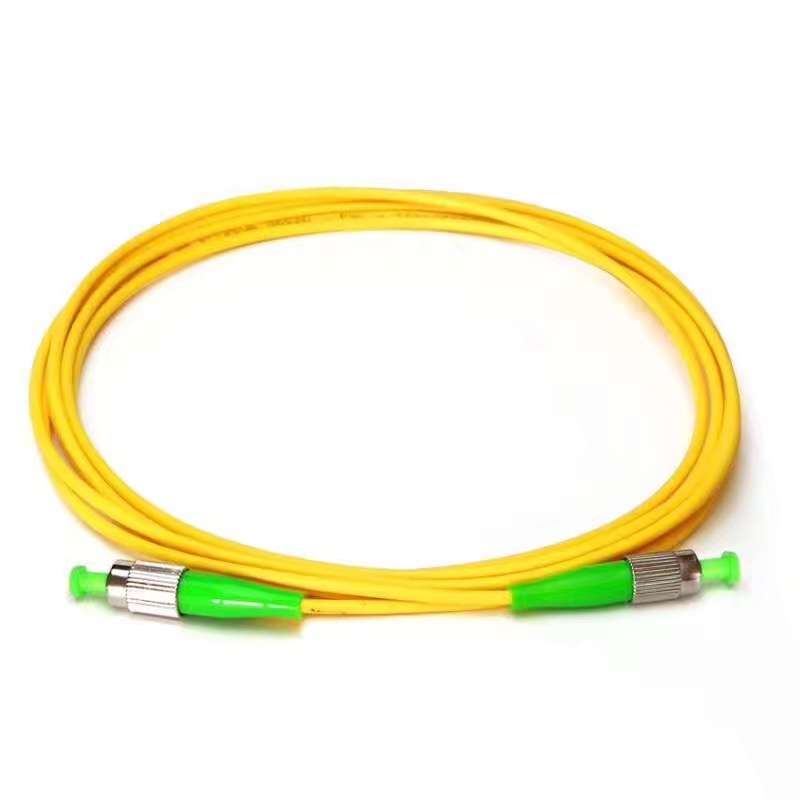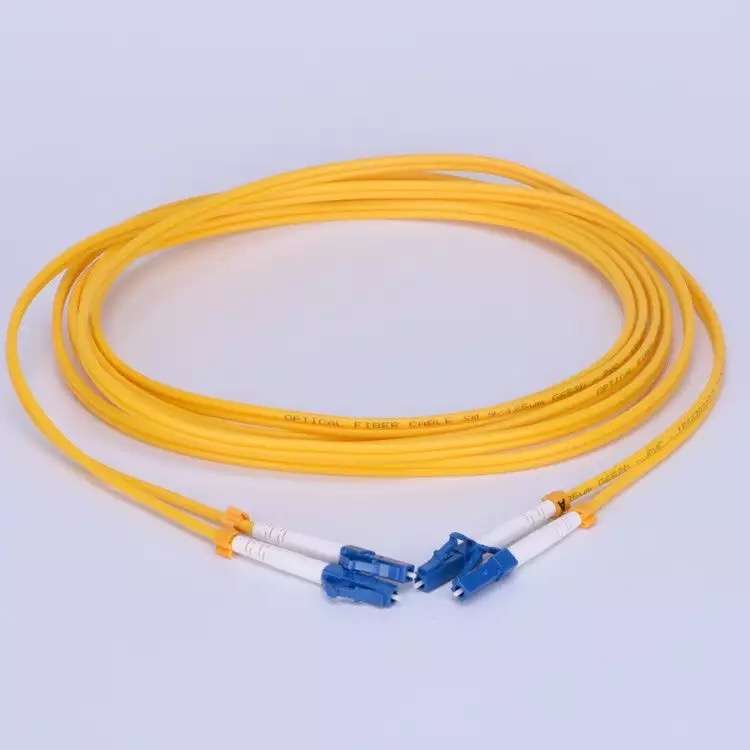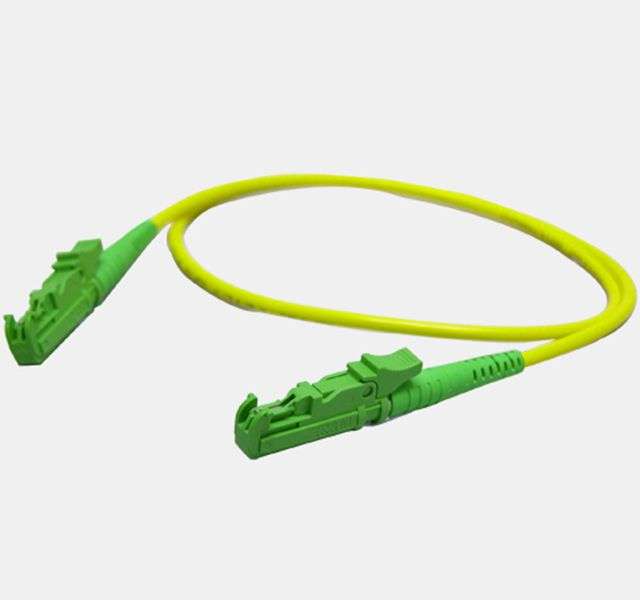Building Reliable Network Infrastructure with Fiber Patch Cords

Enhancing Network Infrastructure with Fiber Patch Cords
Fiber patch cords play a crucial role in enhancing network infrastructure by providing numerous advantages. Firstly, they significantly improve data transmission speeds and bandwidth, allowing for faster and more efficient communication between devices. This is particularly important in today's digital landscape where large amounts of data are constantly being transferred. Additionally, fiber patch cords enhance signal quality and reliability, ensuring that data is transmitted accurately and consistently without any loss or interference. Lastly, these cords offer flexibility and scalability in network design, allowing for easy expansion and modification as the network grows. By incorporating fiber patch cords into your network infrastructure, you can ensure a reliable and high-performing system.
Advantages of Fiber Patch Cords
Fiber patch cords offer several key advantages that make them a superior choice for network infrastructure. Firstly, they enable increased data transmission speeds compared to traditional copper cables. With fiber patch cords, data transfer rates are significantly faster, allowing for quicker and more efficient communication between devices. This is especially beneficial in high-speed applications where latency needs to be minimized.
In addition to faster data transmission speeds, fiber patch cords also provide improved signal quality and reliability. They offer better resistance to electromagnetic interference (EMI), ensuring that the transmitted signals remain clear and free from distortion. This is particularly important in environments with high levels of electrical noise or interference.
Furthermore, fiber patch cords minimize signal loss over longer distances, making them ideal for networks that span large areas. Unlike copper cables, which can experience significant signal degradation over extended lengths, fiber optic cables maintain consistent performance even over considerable distances.
Overall, the advantages of using fiber patch cords in network infrastructure are clear. They enable increased data transmission speeds, support high-speed applications with reduced latency, and ensure improved signal quality and reliability. By incorporating fiber patch cords into your network design, you can create a robust and efficient system that meets the demands of modern technology.

Choosing the Right Fiber Patch Cords
When it comes to selecting fiber patch cords for your network infrastructure, there are a few important factors to consider. The first consideration is the type of fiber. Different fiber types, such as single-mode and multimode, have specific applications and characteristics. Single-mode fibers are designed for long-distance transmissions and offer higher bandwidth, making them suitable for large-scale networks. On the other hand, multimode fibers are better suited for shorter distances and can be more cost-effective for smaller networks. Choosing the appropriate fiber type ensures compatibility and optimal performance based on your network requirements.
Another crucial aspect to consider is the connector type and polishing of the fiber patch cords. There are various connector types available, including LC, SC, and ST connectors, each offering different advantages. LC connectors are small in size and provide high-density connections, making them ideal for space-constrained environments. SC connectors are easy to install and provide good performance in most applications. ST connectors are commonly used in older network equipment but may not support higher data rates compared to LC or SC connectors.
Proper polishing of connectors is essential to ensure low insertion loss and reliable connections. A well-polished connector minimizes signal loss at connection points, allowing for efficient data transmission without degradation or interruptions.
By carefully considering the fiber type and connector options while ensuring proper polishing techniques, you can choose the right fiber patch cords that meet your network's specific needs. This will result in optimal performance and reliable connectivity throughout your network infrastructure.
Installation and Maintenance Best Practices
To ensure the reliability and longevity of your network infrastructure, it is crucial to follow proper installation and maintenance best practices for fiber patch cords. Two key areas to focus on are proper cable management and regular inspection and cleaning.
Proper Cable Management
Organizing and securing fiber patch cords is essential to prevent damage and signal degradation. It is important to use cable management solutions such as racks, trays, or clips to keep the cords neatly arranged. This not only prevents tangling but also improves airflow within network racks, reducing the risk of overheating. Proper cable management also minimizes stress on the cords, preventing accidental disconnections or breakages that can disrupt network connectivity.
Regular Inspection and Cleaning
Periodic inspection and cleaning of fiber patch cords are necessary to maintain optimal performance. Dust, debris, or even fingerprints can accumulate on the connectors over time, leading to signal loss or interference. Regularly inspecting the cords allows you to identify any signs of damage or wear that may require immediate attention.
Cleaning fiber patch cords should be done using appropriate tools and solutions specifically designed for optical fibers. Specialized cleaning kits typically include lint-free wipes, cleaning sticks, or swabs along with a suitable cleaning solution. Gently wiping the connectors helps remove any contaminants without causing damage.
By adhering to proper cable management practices and conducting regular inspections and cleanings, you can ensure that your fiber patch cords maintain optimal signal transmission capabilities. These best practices contribute to a reliable network infrastructure with minimal disruptions due to faulty connections or degraded performance.

Building Reliable Network Infrastructure with Fiber Patch Cords
In conclusion, fiber patch cords offer numerous advantages for building a reliable network infrastructure. They enhance data transmission speeds, allowing for faster and more efficient communication between devices. Additionally, fiber patch cords improve signal quality and reliability by minimizing interference and maintaining consistent performance over longer distances. By choosing the right fiber patch cords based on your specific requirements and following proper installation and maintenance best practices, you can ensure a robust network that meets the demands of modern technology. Incorporating fiber patch cords into your network design is a smart investment that will contribute to the overall reliability and performance of your infrastructure.
See Also
Ventajas de los cables MTP/MPO: Una solución eficiente
Aplicaciones de los Conectores de Ensamblaje Rápido de Campo
Conector de Fibra Ótica SC/APC para FTTH: Montagem em Campo
Types de connecteurs d'assemblage rapide : Comparaison et utilisations
About US
Follow Us
AnetFiber company's main products are indoor and outdoor optical fiber cables, outdoor waterproof pre-connected fiber-to-the-home products, PLC optical fiber splitters, optical fiber jumpers and pigtails, MTP®/MPO high-density big data product solutions, optical fiber field quick connectors and research and development molding, injection molding and production of optical fiber distribution boxes, optical fiber chassis cabinets, the market has expanded to the world, Europe, America, Asia, the Middle East and Latin America.
Address
Shenzhen City, Baoan District, Yanluo Street, Tangxiayong Community, Yangyong Industrial Road, Tonggangda New Energy Vehicle Park 406
Contacts
+86 199 2655 3586

